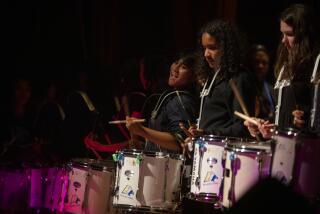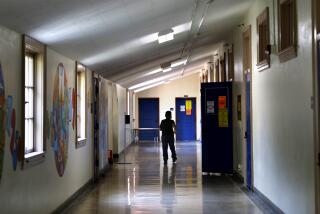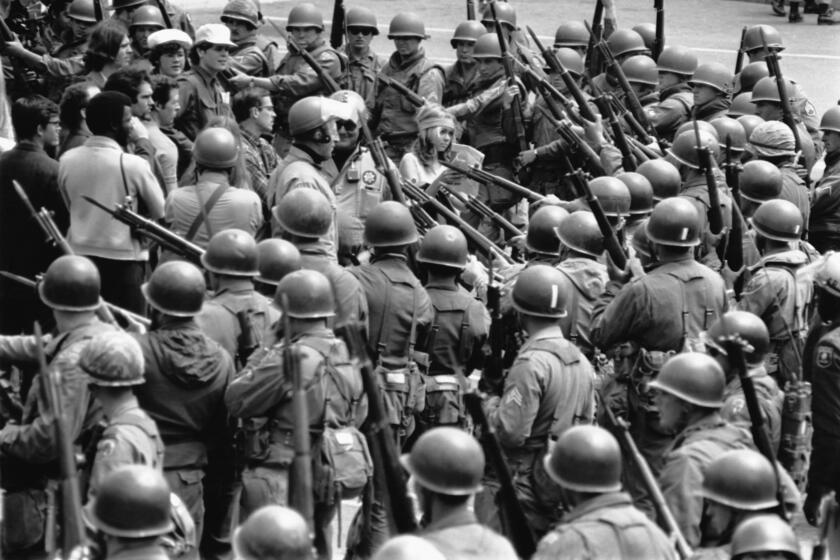Bay Area Schools Get $100-Million Shot in the Arm : Education: As with similar Los Angeles project, part of funding will come from Annenberg Foundation. The goal is to help students benefit from the lessons of reform.
A $100-million collaboration of private foundations and public schools was unveiled Wednesday in San Francisco aimed at helping students throughout the Bay Area benefit from the hard-won lessons of educational reform.
Like a similar project announced six months ago in Los Angeles, the Bay Area collaboration will get part of its funding from the Annenberg Foundation, which is doling out half a billion dollars over five years to support school reform efforts nationwide.
Brown University President Vartan Gregorian, who is advising the foundation on the selection and design of projects, said that with the help of the Bay Area collaboration, public schools in the region can once again become “cradles of democracy, citizenship and hope.”
But, he said Wednesday, the path will not be easy and the stakes are high.
“There are no more excuses, we either have to succeed or we have to fail,” he said at a high school in Millbrae, south of San Francisco, where the grant was announced. “It is a last call for reform. If schools don’t deliver in the first year, the grants will not be forthcoming. There ought to be no room for mediocre and lousy schools.”
The Bay Area project will get $25 million over five years from the Annenberg Challenge, which was extended to public schools in 1993 by editor, publisher and former ambassador to Great Britain Walter Annenberg. The project also is to receive $10 million from the William and Flora Hewlett Foundation and $15 million from the personal fortune of Silicon Valley pioneer and electronics entrepreneur William R. Hewlett, with the rest to come from private donations and public school matches.
Gregorian praised Hewlett as a “patriot . . . who believes that with wealth comes social responsibility to the nation, to the future and to democracy.”
Project leaders said the Bay Area is home to as many as 30 reform efforts involving several hundred schools. But like education reform in general, they said, those efforts are fragmented, duplicative and slowed by isolation.
“A lot of schools go through what I call the ‘moat and drawbridge’ stage, where they try to work alone,” said Merrill Vargo, a former official with the California Department of Education who heads the San Francisco project. “But they can only get a certain ways down the road that way. They have to learn from other people and that costs some money.”
The collaborative will invite as members about 200 schools that are ready to demonstrate such things as a commitment to high academic standards, a willingness to change and support for teachers. The schools selected will receive between $40,000 and $160,000 annually over the life of the project to create “exemplars” that, it is hoped, will help define what is a “good school” in the minds of educators, parents and the public.
“The one rule is that the funds are to support the front-line,” said Vargo.
Money also is to be spent to win community support for such schools, to help those schools share what they have learned with others across the region, to provide professional development for teachers and to attack difficult, down-to-earth problems such as how to manage a school attended by students speaking a variety of languages.
As in Los Angeles, a major challenge facing the project is to strategically invest what is a relatively small amount of money to make a difference across a vast area that includes 118 school districts serving three-quarters of a million students.
On that score, the Bay Area project is more specific than its counterpart in Los Angeles. Where Los Angeles is inviting “families of schools” to prepare a detailed application for what they would seek to accomplish and how those accomplishments would be measured, the Bay Area group is stating its basic academic goals upfront.
Schools that join the collaborative must commit themselves to three rather traditional goals: Students will read well by the end of the third grade, learn enough mathematics in early grades to prepare them for advanced courses in high school and, upon graduation, will be prepared to either go to work or on to college.
The progress of the schools will be closely monitored. “This will not be a situation where we write them a check and wish them well,” Vargo said.
The Bay Area was not on the list of communities that were to be considered in the first round of competition for the Annenberg grants, which now have been awarded to schools in Philadelphia, Chicago and New York, in addition to Los Angeles. But, largely through the persistence of former University of California President David Gardner, a coalition of Bay Area foundations, researchers and educators put together a winning proposal.
Gardner, now president of the William and Flora Hewlett Foundation, said the two California projects take in schools that serve 40% of the state’s 5.3 million students. He said having two such efforts under way at once might provide the critical mass for change that could speed school reform statewide.
Vargo said that if it is successful, the Bay Area project might even have an impact on schools across the nation.
“We’ve got rural, we’ve got urban, we’ve got big, we’ve got little,” she said. “If we can do it here, there’s something for the entire nation to learn.”
But, she cautioned, “it’s not a silver bullet, not a panacea, not a quick fix. It’ll be a lot of tough work.”
Colvin reported from Los Angeles, Wallace from San Francisco.
More to Read
Start your day right
Sign up for Essential California for news, features and recommendations from the L.A. Times and beyond in your inbox six days a week.
You may occasionally receive promotional content from the Los Angeles Times.





